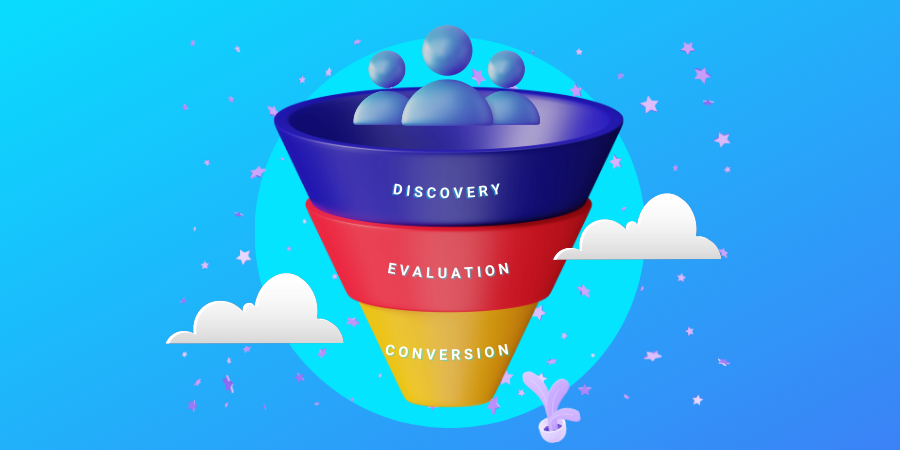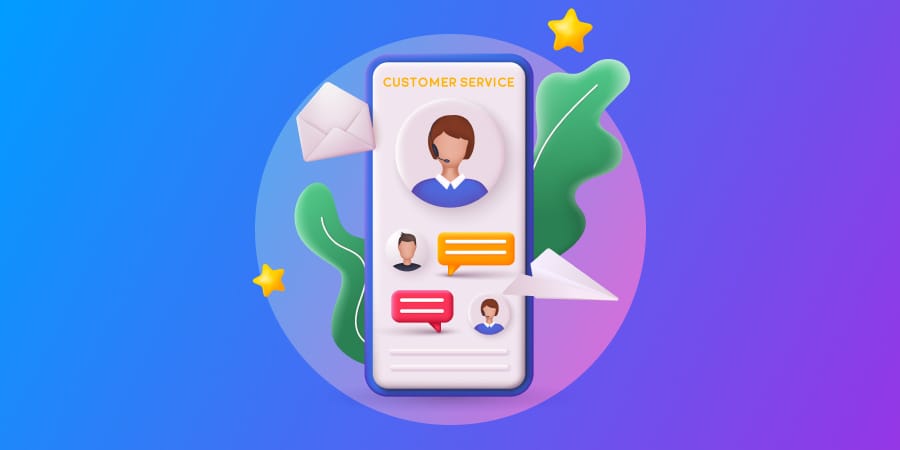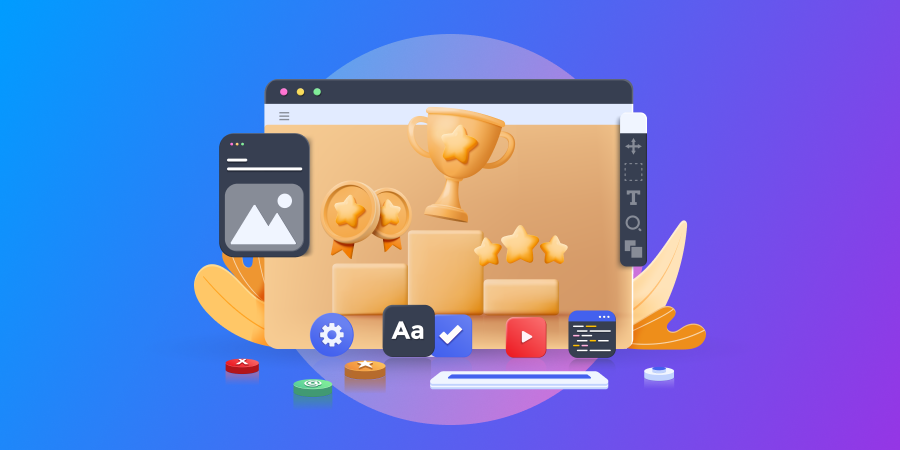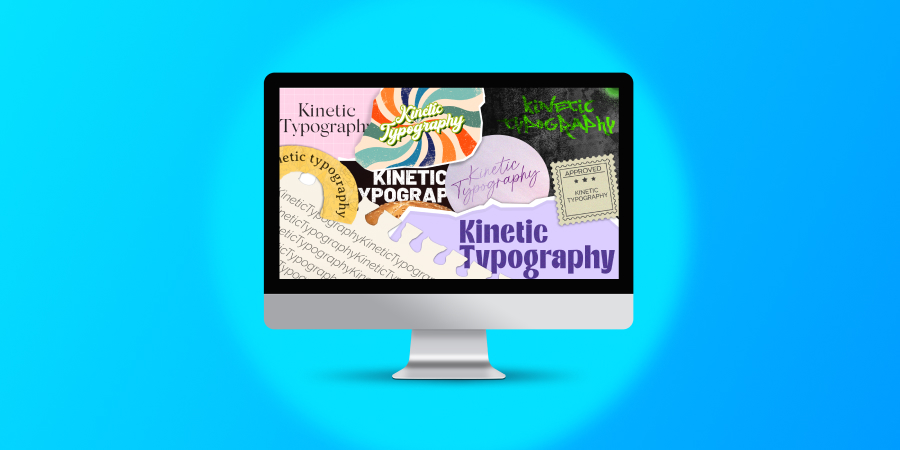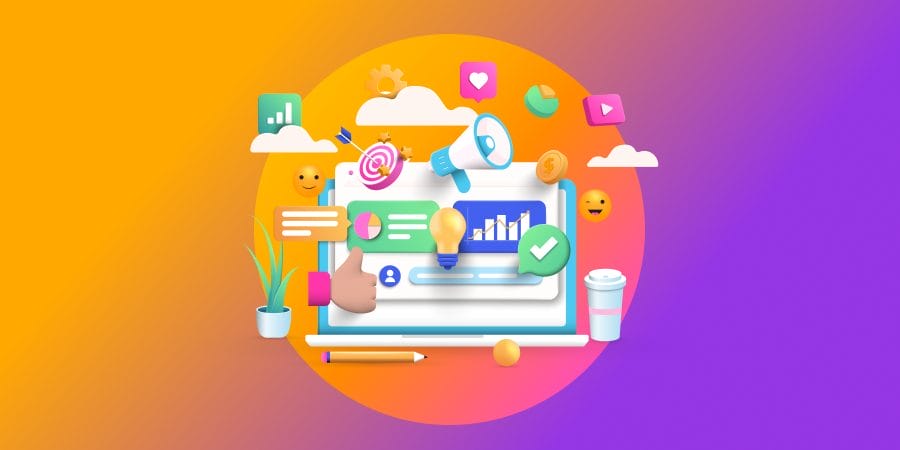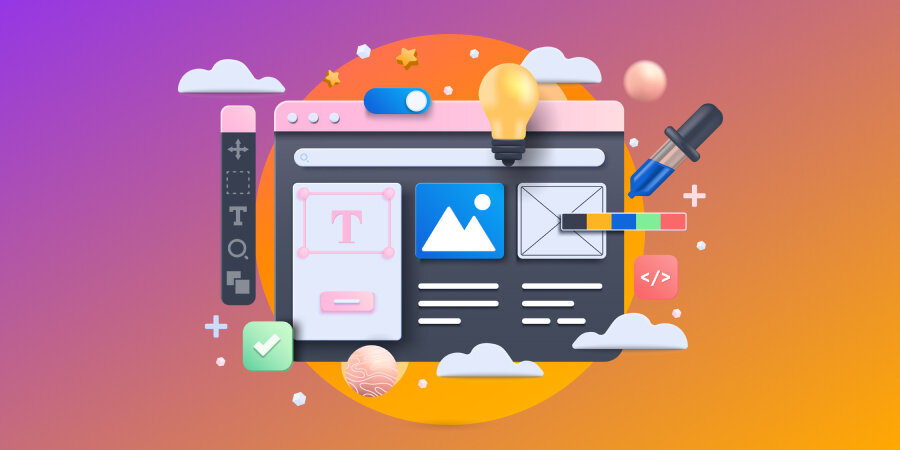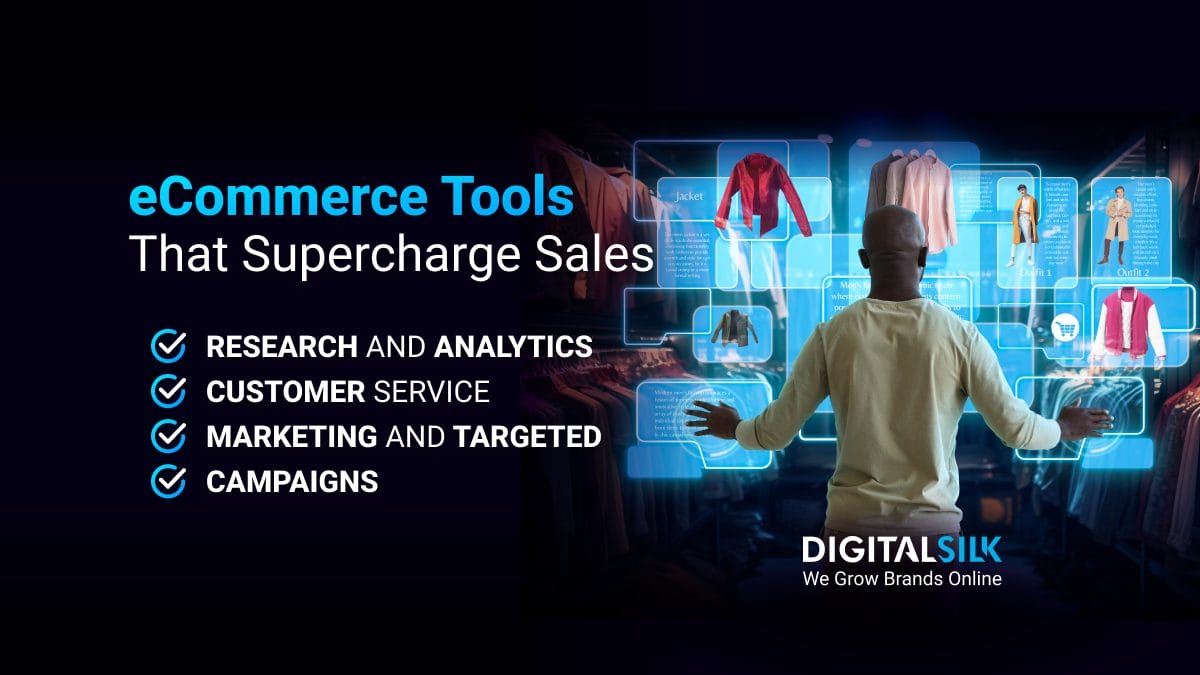As many as 90% of organizations use content in their marketing efforts, websites included; however, very few truly understand how to use content to funnel the user through the website.
To build an effective user journey on your website and guide visitors to a desired goal, a.k.a. conversion, you need to understand the phases an average lead goes through before converting.
This is also known as the conversion funnel.
Let’s dive right into conversion funnels and learn how your business can benefit from them, too.
Digital Silk builds custom websites. Request a quote
What Is A Conversion Funnel?
A conversion funnel guides site visitors step-by-step through content marketing – from the landing page to the page where the conversion (a purchase, subscription, etc.) is completed.
The purpose of this funnel is to engage visitors with compelling, relevant and valuable content, presented in several stages that all have specific purposes yet are interconnected.
It’s called a funnel because it resembles its shape – the pool of potential customers is largest at the top (the beginning of the journey at the landing page, which is usually the home page) while the amount of potential customers shrinks as they progress to the next stages.
Why?
Because the number of people who become aware of your brand is naturally the maximum amount of people. Fewer people will remain interested in your offerings and consider converting. Even a good deal of those who end up at the final stage – the checkout or subscribe page – will decide not to convert.
CEP research shows that buyers are typically 57% of the way to a buying decision before actively engaging with sales.
This underscores the importance of marketing to pave the path at every step of the journey for consumers to learn about and engage with your brand.
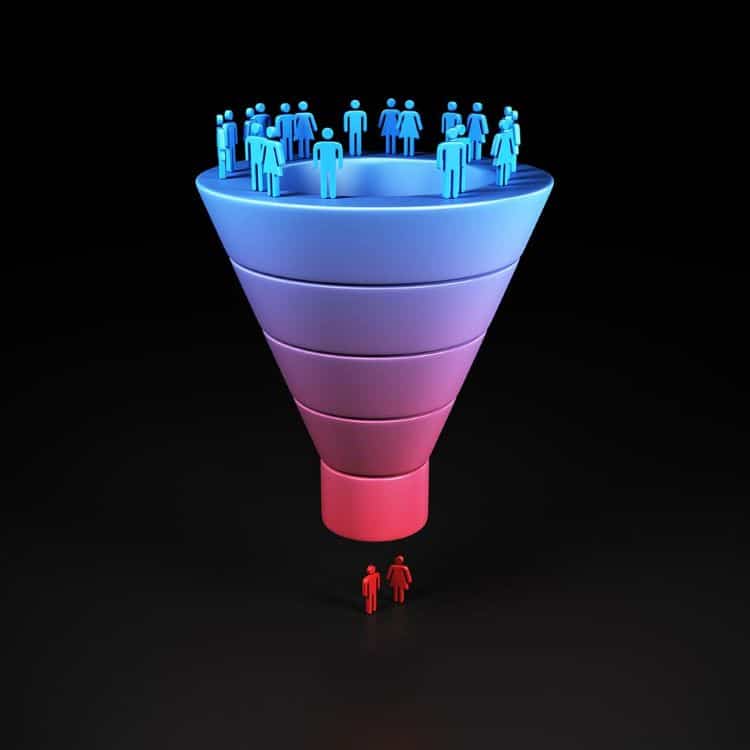
What Are The Main Stages Of A Conversion Funnel?
It is essential to understand what your business should present at every stage of the user journey toward the desired conversion.
Here are the main stages of a funnel that users or customers typically go through.
1. Top Of The Conversion Funnel – Discovery
9 out of 10 B2B buyers say online content has a moderate to major effect on purchasing decisions.
At the top of the conversion funnel, your objective is to make sure potential customers understand what your brand stands for.
In other words, this is the best time to raise brand awareness!
Speak with our experts! Schedule A Consultation
The Situation
A potential customer has arrived at your website for the first time OR has been around before but only superficially, without ever exploring further than the home page. This is what SEMrush refers to as “indirect customer acquisition” – you are not close to converting a customer into, say, making a purchase…
…BUT, if you play your cards right in terms of content, they may be hooked and interested to come back for more – gradually inching toward conversion.
Your Goal
Raising brand awareness and educating users/visitors for the purpose of turning them into loyal visitors and, eventually, convertees.
The Strategy
Help your potential customers become interested in your brand by pointing out the values and benefits it has for their needs and problems. The content in the top of the conversion funnel should be:
- Educational: talk about topics that interest your customers and educate them – convey the image of authority on the given subject
- Full of understanding for your customers’ needs: talk about the customer needs and empathize with your audience, DO NOT talk about yourself or the product
The reasoning behind this is simple: the better your customers are educated (by you) on a subject that matters to them, the more likely they are to convert.
Useful types of content in this phase include:
- Blog posts (especially long-form ones)
- Videos
- Webinars
- Comprehensive guides, long-form landing pages, etc.
Pro tip: In order to provide the most valuable information at this awareness stage of the conversion funnel/user journey, find out what questions your audience has. Look at related searches on Google or use LSI Graph, Answer The Public, Reddit, Quora and other platforms.
2. Middle Of The Conversion Funnel – Consideration & Evaluation
At this stage of the conversion funnel, your brand is increasingly associated with the solution you offer.
Ideally – thanks to the previous educational content at the top of the funnel – the solution you provide has been identified by the user as the exact type of solution they need.
The Situation
This is the stage at which a potential customer is evaluating your brand and its offerings.
This stage is critical because, in it, the user is making a decision that will determine which solution is to be used (purchased): yours or a competitor’s.
Your Goal
Customer acquisition by explaining to the user how you can help them.
The Strategy
The above goal is achieved by providing enough informative content so that the user can make an informed decision when deciding whether or not to buy a product from you.
How can you do this?
Through the following channels:
- Case studies
- Demo videos
- Datasheets and in-depth product descriptions
- Tutorials and how-to content
- Stories and testimonials from satisfied users of your products or services
Pro tip: To get ideas for top-notch content for this stage, look for related content that is ranking well and FAQ pages from successful companies that provide similar solutions. Analyze similar content that ranks the best and establish the main takeaways provided there.
3. Bottom Of The Conversion Funnel – Conversion
87% of users will trust a brand message after seeing it across six different channels.
Finally, the user has reached the desired outcome – conversion! The very reason for the funnel’s existence.
This means they have decided to go from an interested potential user to a valued customer.
The Situation
The visitor has turned into a customer – or is just about to. How you make the final sales pitch and turn the user’s interest (which is at its peak) into a final decision to commit and buy from you is wildly important at this point.
Your Goal
To make the user click that Buy (or Subscribe, Order, Submit, etc.) call-to-action button.
The Strategy
Emphasize the value of the product or service that answers the user’s needs. Propose all the main benefits and don’t be afraid to go into detail with datasheets, comparison charts and in-depth product or service clarifications.
The marketing content at this phase resembles sales material and can be one of the following or all of them at once:
- Reviews and testimonials
- Detailed product descriptions
Beyond The Conversion Funnel – Retention & Adoption
Retaining current customers is 6–7 times less costly than acquiring new ones.
Converting visitors into customers is effective only if you manage to keep them coming back again and again. In other words, having a user as a one-time buyer doesn’t bring much value to any business.
Depending on the model of a business – whether users purchase products or subscribe for services – the very essence of customer retention is ensuring that their conversion is not a one-time thing and that they purchase products or use services again.
The Situation
You have a new customer. The task now is to make sure they stay loyal to the brand and, ideally, convert their friends and family members into customers by word of mouth and advocating for your business.
Your Goal
To maintain the loyalty of users that are advocating your product/service after converting.
The Strategy
At this stage, customer care is the name of the game. Once a visitor has turned into a buyer or a user of your services, you should offer them loyalty discounts, specialized newsletters and offers, exclusive insights into new or future products/services, etc.
In short, outreach and content methods to be used here include:
- Email and newsletter content
- Insider info and exclusive how-to content
- Special offers
- Customer support
- Friend referral discounts
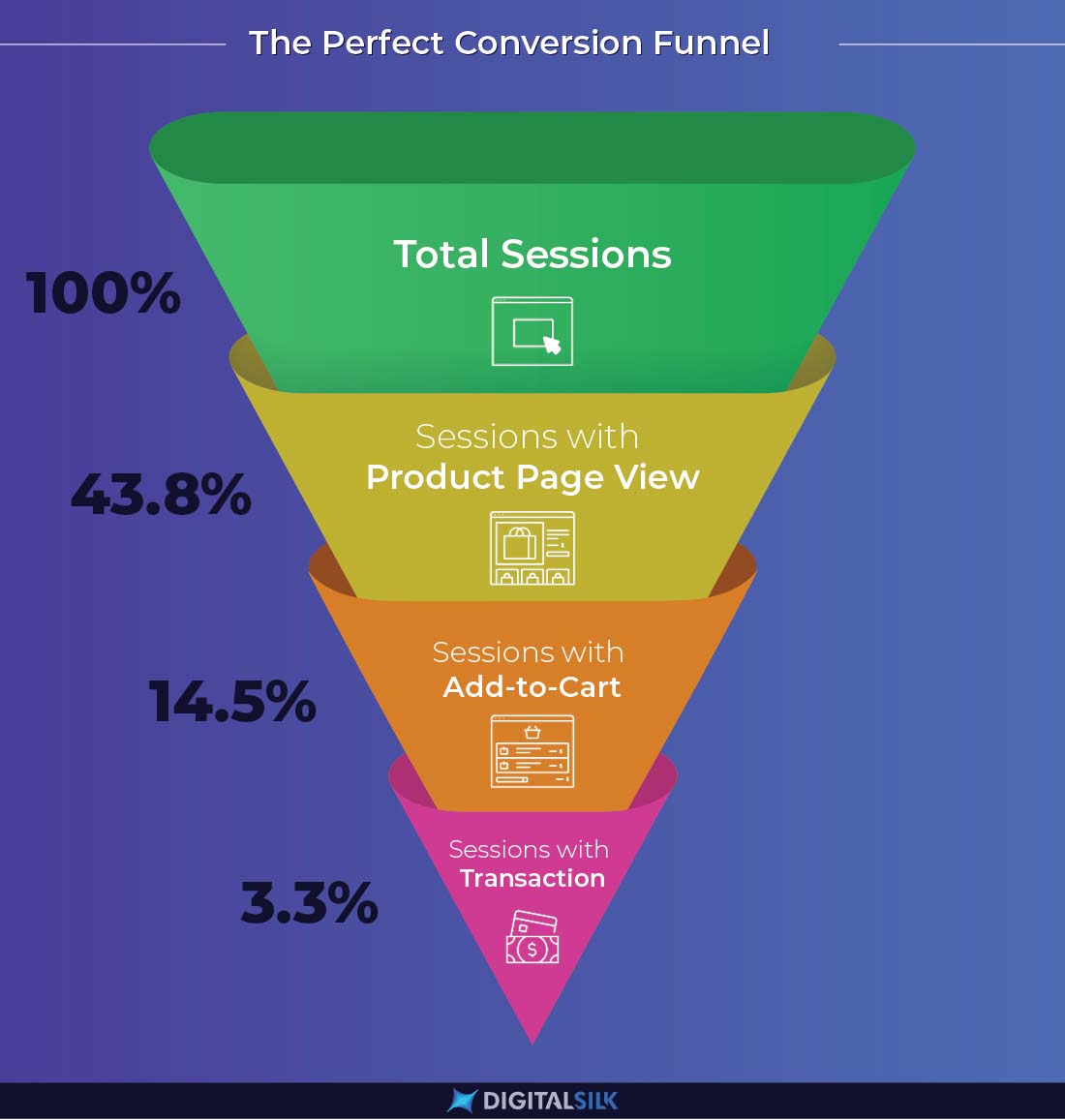
What Is A User Journey?
A user journey is a complete path the user takes to reach the goal on a certain website or through a conversion funnel. That includes the post-conversion behavior as well (retention, advocating, word-of-mouth impressions and so on).
A user journey is closely related to the concept of user experience (UX). It illustrates the way a user currently interacts with a brand, product or service and the way they COULD interact. The latter is a job for conversion optimization – a subject to which we’ll get to in a few minutes.
This journey is called a buyer journey if the conversion goal is making a purchase and it’s an integral part of every stage of the conversion funnel.
In fact, you may find it to be remarkably similar to the conversion funnel.
So, what is the difference between a user journey and a conversion funnel?
Basically – the conversion funnel helps a service provider or a business owner comprehend at what point of the journey users are and how to keep them engaged.
The user journey is a more broad phenomenon – it’s used to define how a visitor behaves before they learn about the brand and its product/solution (how they find out about a product or a service, how they decide to get to know it better etc.) and even after the conversion takes place. It’s a map that encompasses a longer period of time and a wider range of user activity.
How To Map A User Journey
Out of the abovementioned conversion funnel stages, you can devise a series of steps that the user will take.
The end goal? Getting them to convert and become loyal customers!
There are many informational articles and schools of thought on this topic, but the bottom line, to create a seamless user journey, you need to think of:
- Context: Here, you can think in terms of the user’s whereabouts. Where they are both on-site and offline and what may be preventing them to take the next step toward your brand.
- User journey’s progress: How can a current step be optimized to make them proceed to the next one without failing?
- Functionality: Depending on the device the user is accessing the site with, what functionalities are they expecting and how are they experiencing them?
- Emotional state: As they progress through the funnel, what are they feeling every step of the way? Are they annoyed, bored, intrigued, engaged?
Speak with our experts. Schedule A Consultation
Benefits Of User Journey Maps
Apart from being a part of a wider conversion funnel narrative, user journeys have certain advantages that may not appear that obvious at first. And not all of them are conversion/sales-related.
These benefits are:
- Understanding user behavior: user journey provides insight into habits, routines and workings of a significant part of your target audience known as user personas (more on them in the next segment). This insight can be used for figuring out what they expect from the system they interact with.
- Demonstrating your vision: your business partners may get a very clear picture of your brand’s values and mission through your user journey optimization.
- Identifying possible functionalities: by understanding the processes and steps the users would like to take on their way to conversion, a business decision-maker or a user journey developer can realize the shortcomings of and potentials for functionalities and functional requirements that would make the journey possible.
- Defining messaging and the interface: once the users’ expectations have been understood, a clearer idea of what sort of interface and messaging should be put in place should emerge.
Understanding User Personas
Defining your user persona is an essential part of user experience, user journey and, therefore, the conversion funnel.
What is a persona?
A user persona is an avatar of your ideal customer or a detailed representation of a particular audience segment. Personas encompass the very essence of these individuals.
In order to create (and understand) your user personas, you should consider your user’s:
- Demographic profile
- Goals
- Motivations
- Current pain points
- Overall character
- Main tasks they want to achieve
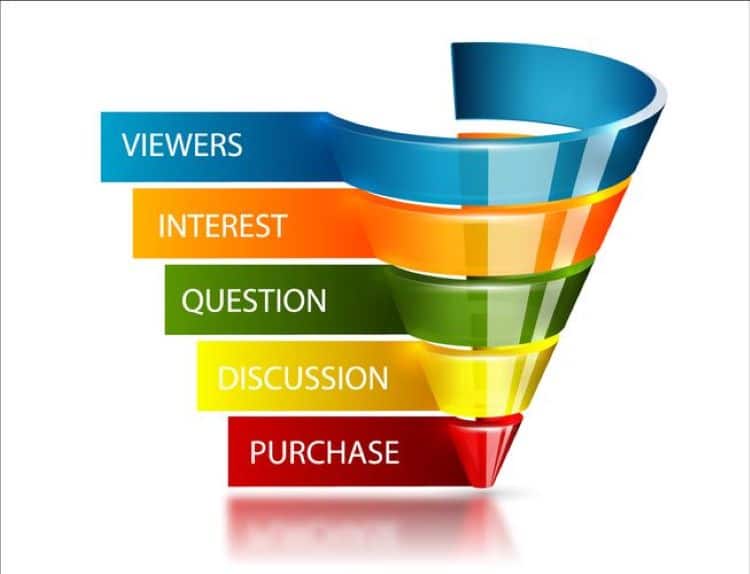
How To Use Content Marketing To Reach People At Any Stage Of The Conversion Funnel
Did you know that 65% of marketers are not nurturing leads?
When trying to figure out the perfect conversion funnel design for your website, one thing you should always keep in mind is your audience.
The first step is to identify the right target audience for the content that will answer to their needs.
Try answering these questions about your audience:
- What are the issues they are facing that your products or services can help solve?
- What are the most common questions they are asking?
- How can you make your products or services a part of their routine and daily lives?
- How can your products or services improve your audience’s lives and help them feel satisfied?
The next step is to ask the right questions about the conversion funnel itself.
Start with these questions:
1. Do I Answer The Right Question At Every Stage?
The first frame of reference for a successful conversion funnel is the force of the value proposition, as MECLABS’ managing director Flint McGlaughlin suggests.
The potential customer will make a positive decision about your product or service at every stage of the conversion funnel if they are certain the value they are offered exceeds the cost they have to pay.
To make sure they provide these small “yes’s” en route to the major “yes” as the main conversion, be wary of the things that can cause them to say “no” and make them drop out of the funnel.
Start with these questions:
- Is your content directed to the wrong persona?
- Does your content have enough value force?
- Does it have too much cost force?
- Does a part of your content come in too early and should it belong in a later stage of the funnel?
- Are you delaying the most important point?
2. Is The Content At Every Stage At Its Most Valuable State?
This outlines the importance of content relevancy. In the case of the conversion funnel, the relevancy is two-fold:
- Relevant messages need to be sent to niche audiences
- Customers will engage in conversation with you when it’s relevant to them (when a need for that arises)
Having the most valuable content doesn’t only mean that it caters to the needs of the user. It also means being deployed at the exact right moment with the most helpful piece of information.
3. If The Funnel Is Not Working, Where Should I Look For The “Leak” & How Can I Fix It?
Before launching the funnel, test the weakest links in it.
At the first stage of the conversion funnel, you should always make an amazing offer.
The mistake most businesses make is to focus on the landing page and the checkout page only – the very top and bottom of the funnel, leaving the middle stages unoptimized.
As Brian Dean of Backlinko often suggests, conversion funnel makers should instead focus on fixing the bottlenecks. To do that, he suggests to:
- Outline every stage of a conversion funnel
- Measure the conversion rate of every step using analytics tools
- Focus on those with the lowest conversion rate where people abandon the user journey
Optimizing Content For Every Stage Of The Funnel
Here is how to optimize your content depending on the funnel stage.
1. Optimizing Content For The Top Of The Conversion Funnel
Since this stage of the conversion funnel is used to reach the widest audience, it’s all about getting as many people to pay attention as possible.
In that regard, the types of content that can optimize the conversion rates at this stage are:
- Social media content curation: enable easy sharing of your content on social media to extend the reach of your content
- Blog posts: insightful articles that are full of expert advice provide a lot of value to your potential customers who have come looking for help for their issues AND are a mighty SEO resource
- Infographics: most blog post ideas can be presented in a visually stunning infographic packed with stats and data
- Videos: a type of content with the most powerful conversion abilities
2. Optimizing Content For The Middle Of The Conversion Funnel
At the second stage of the funnel, you begin to nurture the relationship with the potential user and the education on your offering intensifies.
Optimizing shareable content with great learning potential is what you can do at this stage of the funnel, including:
- Case studies: very heavily infused with data, this type of content gathers and collects stats and other info that give a specific view into the workings of your product or service
- eBook guides: a more in-depth version of how-to blog posts that help customers solve their problems
- White papers: sheets with proven, statistical data that provide scientific proof of your product’s effectiveness
3. Optimizing Content For The Bottom Of The Conversion Funnel
As we already mentioned, this is the stage where you get personal with the user who is on the verge of converting.
The key to optimizing the content at this stage is to bridge the gap between the free value given and the product/service.
It should be backed with calls to action (CTAs) as well as invites for demo and trial versions of the product you’re offering, as well as:
- Webinars and classes: A way to increase a wish to convert as well as foster trust is by giving events and classes for your audience
- Free discount codes: an offer that is valid for a limited time creates a sense of urgency and a famous FOMO (Fear Of Missing Out) technique for engaging customers
- Customer testimonials: The reviews and testimonials from satisfied customers can be displayed either on-site, at the funnel’s last stage, or can be turned into a series of newsletters and emails. They should contain the story about how these customers’ dealt prior to purchasing your product and how their conversion changed their life for the better
Wondering how blogs can contribute to your conversion funnel?
Let’s hear what Emma Debeljak, Head of Content at Digital Silk, has to share on this topic:
4 Conversion Funnel Examples
It’s time to look at five exceptional and influential types of conversion funnels by some of the most esteemed companies in their niche.
1. Netflix
Landing on Netflix’s home page, the user is met with a wonderfully enticing offer of getting the entire streaming service’s content free for 30 days!
A cool extra here is the option to cancel your trial at any time and not have to pay (the so-called risk reversal).
Right from the get-go, the conversion funnel grabs the attention of the user.
The iconic video service had 195 million monthly users in the third quarter of 2020.
The conversion goal on Netflix is to sign up for the service. The extremely simple and user-friendly layout of the site helps in that regard, as visitors follow the single-page content and to-the-point copy.
At the bottom of the page is the Frequently Asked Questions section as a valuable piece of learning content that gives more knowledge on what the user is exactly getting – followed by a CTA button.
Netflix is a world-renowned brand and its reputation works in its favor – but that’s exactly why they keep their conversion funnel extremely easy to navigate, with the bare minimum of info needed to convince users to convert.
To learn more about it, go through the entire Netflix sales funnel procedure.
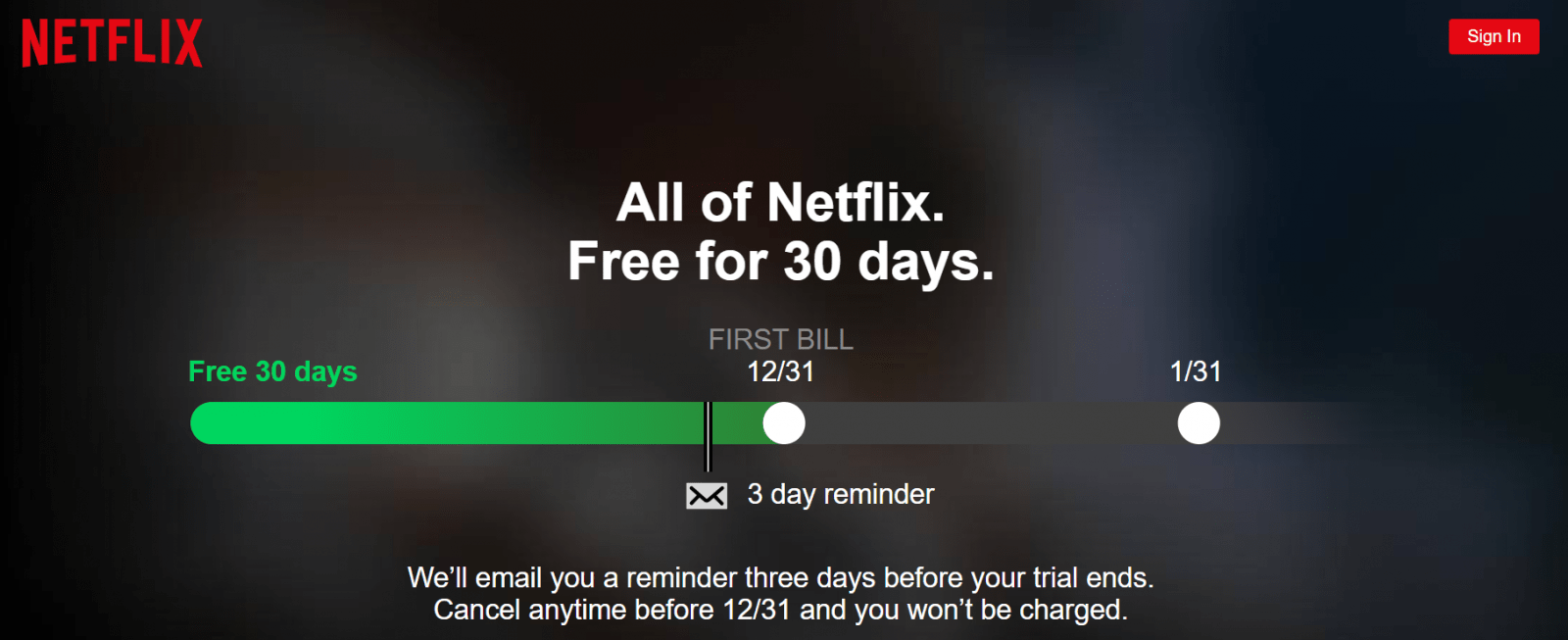
2. Mailchimp
One of the most widely used e-mail marketing utilities, Mailchimp, made it easier for its services to go viral when they added the line “Powered by Mailchimp” at the end of every email sent via its service, which helped spread the word about the brand.
Mailchimp’s home page conversion funnel follows all the basic steps covered in this article. First, there’s the information about a website-building novelty service, followed by musings backed with social proof on why Mailchimp is THE solution for eCommerce, startups and mobile and web apps.
What comes next is a selection of blog posts, case studies and tips to provide knowledge value to users.
The conversion funnel wrap-up is completed with a very effective CTA promising two things: ease of use and service free of charge.
The interactive pricing page for calculating a prospect’s price is also quite unique. When you put in how many subscribers you have, it will instantly quote you the exact price. The simplicity of the pricing is also good. It’s really based on how many email subscribers you have.
The aspirational marketing stands out on the homepage. Mailchimp really doesn’t talk at all about sending emails. It’s more about getting you in the door to use the product.
They actually barely mention the fact that email marketing with their services can grow your business. They don’t focus on results like getting more sales or leads.
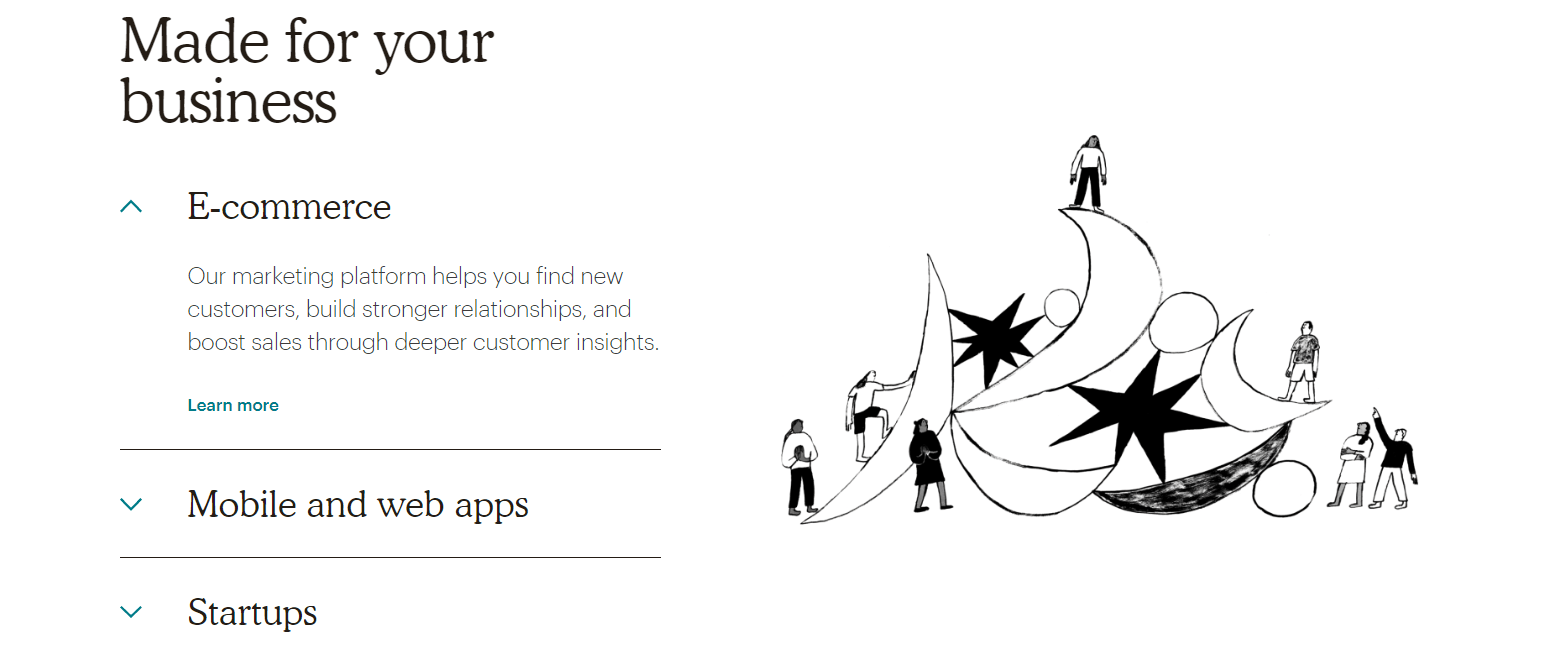
3. Travelzoo
Global tourism and traveling service, Travelzoo, has a three-step conversion (sales) funnel consisting of a lead page, a sign-up page and a zip code page.
What is immediately noticeable at the top of their home page are two social proofs of their success: 28 million members worldwide and 3.5 million likes on their Facebook page.
Also, there is a neat RVSP button for responding to current deals and another one that immediately calls on to join for free.
After scrolling down through some neatly arranged travel arrangements and offers, a user reaches the CTA that promises exclusive content to those who sign up for their newsletter.
Before signing up, a user is once again reminded that they’ll get the best travel exclusives completely free of charge. Also, once a user signs up, they are asked for their ZIP code so that offers they receive to their email address are custom-tailored.
You can go through a complete Travelzoo’s conversion funnel structure to learn more.

4. CrazyEgg
CrazyEgg provides deeper insight into how visitors engage with your website and what they are clicking the most through A/B testing and heatmaps.
Their conversion funnel consists of a lead magnet page, sign-up page, pricing plan page and order form page.
A catchy headline of “Make your website better. Instantly.” makes two promises and gives two values to users: to improve their website (a possible source of income) and to do it immediately.
Then comes the social proof with a mention of the number of websites using CrazyEgg.
Another conversion incentive is made on the landing page: a 30-day trial period that can be canceled anytime.
When you enter your domain, you are taken to a Create Your Account page, complemented by a client testimonial.
The pricing page lists a five-tier package with different functionalities – including a custom-tailored plan option.
Scrolling down on the same page a user discovers the list of brands using CrazyEgg and illustrated examples of what this tool does.
Lastly, the final stage of the conversion funnel – the order page – insists that it’s a no-risk procedure.
Take a look at the exact structure of CrazyEgg’s conversion funnel for more details.
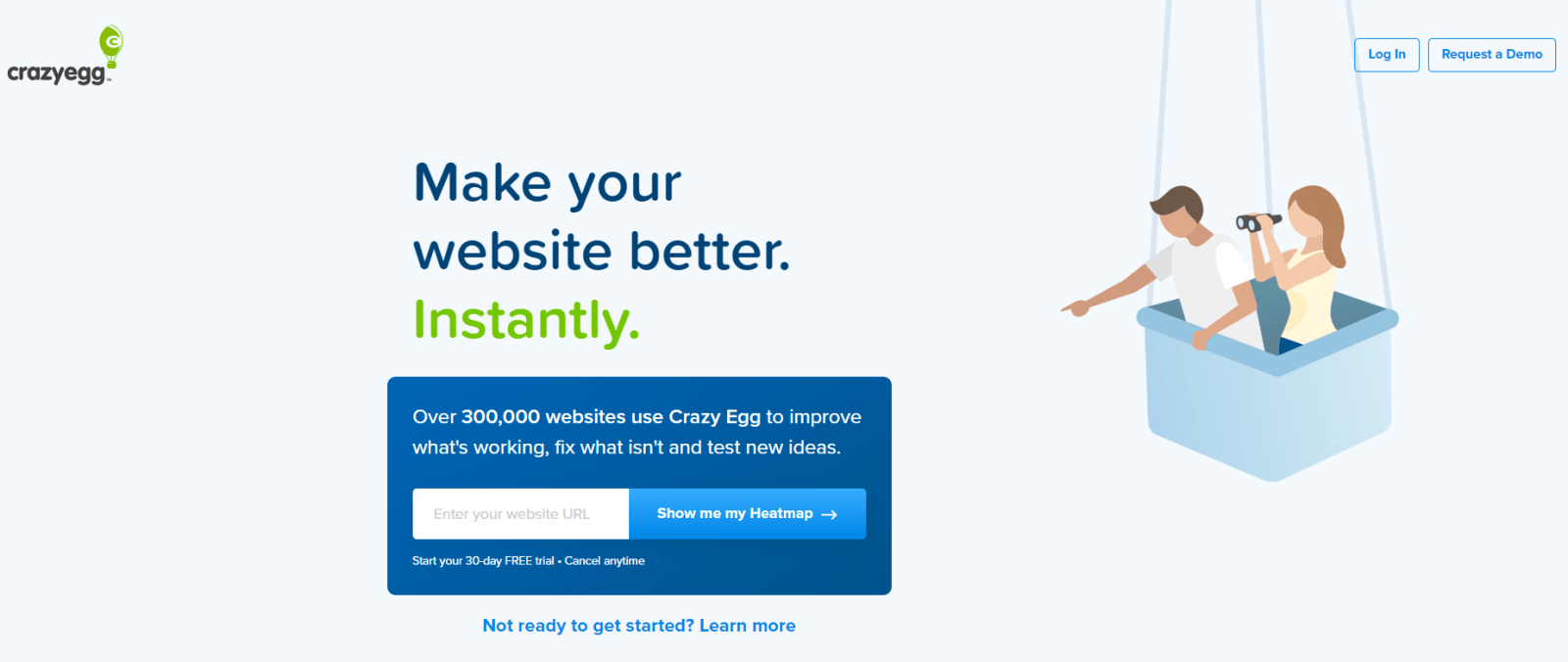
Key Takeaways On Conversion Funnels & User Journeys
Let’s wrap this guide up with a few key takeaways for you.
To define your user personas and map out user journeys the right way, you need to:
- Research your target audience
- Understand their needs and wants
- Learn about their behavior and expectations
Once you have all the information, you can dive into content creation for every stage of a conversion funnel.
The main stages of a conversion funnel include:
- Discovery at the top of the funnel
- Consideration and evaluation at the middle of the funnel
- Conversion at the bottom of the funnel
The main content types for each stage include:
- Blog posts, videos, webinars and guides for the top of the funnel
- Case studies, demos, tutorials and product comparisons for the middle of the funnel
- Reviews, testimonials, product descriptions and sales pages for the bottom of the funnel
Every content piece you create should fulfill a specific goal and answer the questions your audience might have at different stages of a funnel.
Remember: The ultimate goal is to go beyond the conversion funnel and to nurture long-term relationships with your users, grow their loyalty and increase customer retention for your business. A carefully crafted content marketing strategy can help you do just that!
"*" indicates required fields


